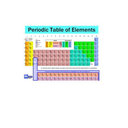Hits of a high-throughput screen identify the hydrophobic pocket of autotaxin/lysophospholipase D as an inhibitory surface.
Märksõnad
Abstraktne
Autotaxin (ATX), a lysophospholipase D, plays an important role in cancer invasion, metastasis, tumor progression, tumorigenesis, neuropathic pain, fibrotic diseases, cholestatic pruritus, lymphocyte homing, and thrombotic diseases by producing the lipid mediator lysophosphatidic acid (LPA). A high-throughput screen of ATX inhibition using the lysophosphatidylcholine-like substrate fluorogenic substrate 3 (FS-3) and ∼10,000 compounds from the University of Cincinnati Drug Discovery Center identified several small-molecule inhibitors with IC₅₀ vales ranging from nanomolar to low micromolar. The pharmacology of the three most potent compounds: 918013 (1; 2,4-dichloro-N-(3-fluorophenyl)-5-(4-morpholinylsulfonyl) benzamide), 931126 (2; 4-oxo-4-{2-[(5-phenoxy-1H-indol-2-yl)carbonyl]hydrazino}-N-(4-phenylbutan-2-yl)butanamide), and 966791 (3; N-(2,6-dimethylphenyl)-2-[N-(2-furylmethyl)(4-(1,2,3,4-tetraazolyl)phenyl)carbonylamino]-2-(4-hydroxy-3-methoxyphenyl) acetamide), were further characterized in enzyme, cellular, and whole animal models. Compounds 1 and 2 were competitive inhibitors of ATX-mediated hydrolysis of the lysophospholipase substrate FS-3. In contrast, compound 3 was a competitive inhibitor of both FS-3 and the phosphodiesterase substrate p-nitrophenyl thymidine 5'-monophosphate. Computational docking and mutagenesis suggested that compounds 1 and 2 target the hydrophobic pocket, thereby blocking access to the active site of ATX. The potencies of compounds 1-3 were comparable to each other in each of the assays. All of these compounds significantly reduced invasion of A2058 human melanoma cells in vitro and the colonization of lung metastases by B16-F10 murine melanoma cells in C57BL/6 mice. The compounds had no agonist or antagonist effects on select LPA or sphingosine 1-phosphate receptors, nor did they inhibit nucleotide pyrophosphatase/phosphodiesterase (NPP) enzymes NPP6 and NPP7. These results identify the molecular surface of the hydrophobic pocket of ATX as a target-binding site for inhibitors of enzymatic activity.


